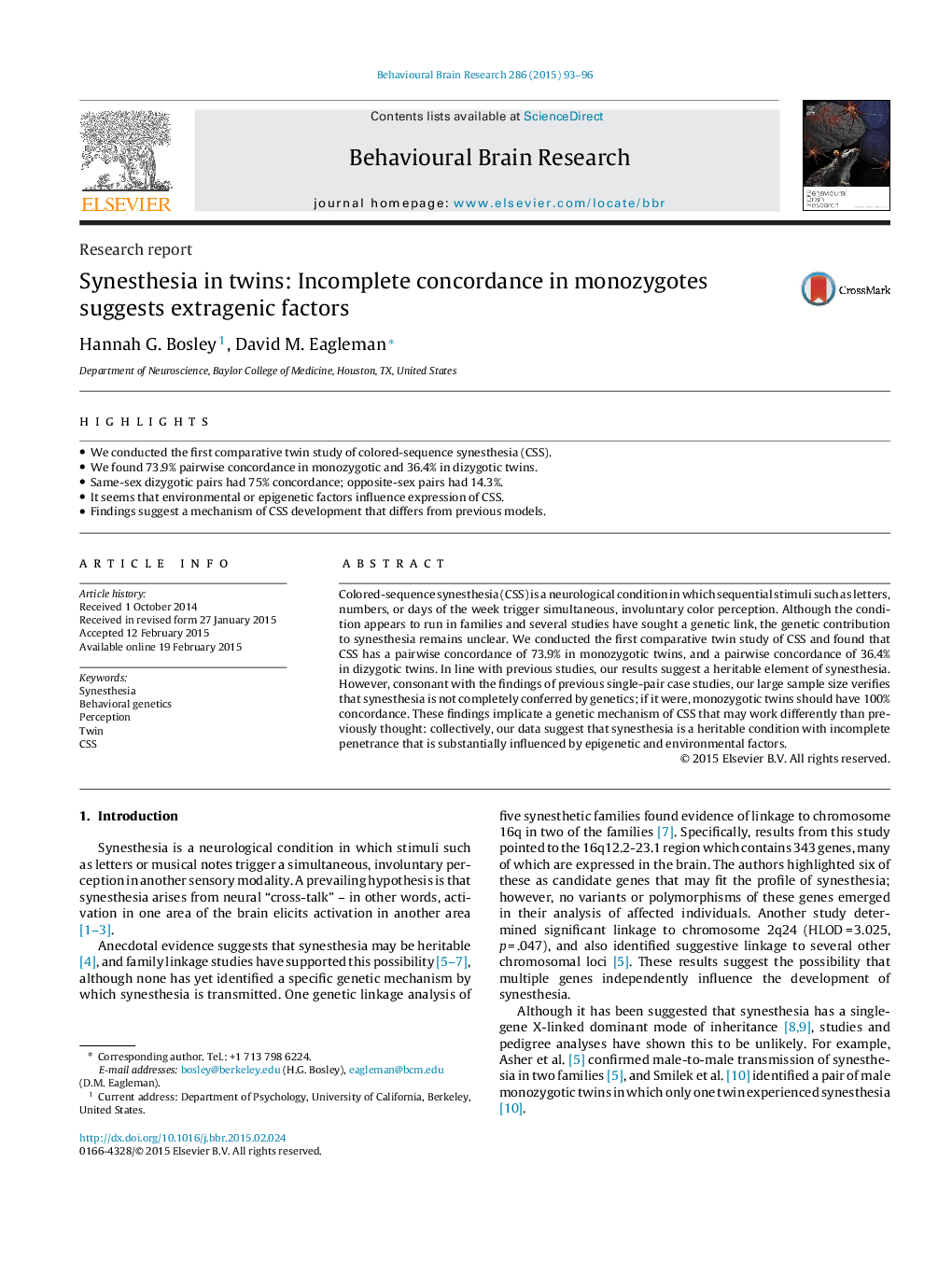| Article ID | Journal | Published Year | Pages | File Type |
|---|---|---|---|---|
| 6257096 | Behavioural Brain Research | 2015 | 4 Pages |
â¢We conducted the first comparative twin study of colored-sequence synesthesia (CSS).â¢We found 73.9% pairwise concordance in monozygotic and 36.4% in dizygotic twins.â¢Same-sex dizygotic pairs had 75% concordance; opposite-sex pairs had 14.3%.â¢It seems that environmental or epigenetic factors influence expression of CSS.â¢Findings suggest a mechanism of CSS development that differs from previous models.
Colored-sequence synesthesia (CSS) is a neurological condition in which sequential stimuli such as letters, numbers, or days of the week trigger simultaneous, involuntary color perception. Although the condition appears to run in families and several studies have sought a genetic link, the genetic contribution to synesthesia remains unclear. We conducted the first comparative twin study of CSS and found that CSS has a pairwise concordance of 73.9% in monozygotic twins, and a pairwise concordance of 36.4% in dizygotic twins. In line with previous studies, our results suggest a heritable element of synesthesia. However, consonant with the findings of previous single-pair case studies, our large sample size verifies that synesthesia is not completely conferred by genetics; if it were, monozygotic twins should have 100% concordance. These findings implicate a genetic mechanism of CSS that may work differently than previously thought: collectively, our data suggest that synesthesia is a heritable condition with incomplete penetrance that is substantially influenced by epigenetic and environmental factors.
